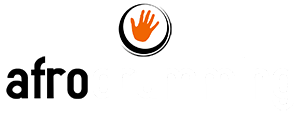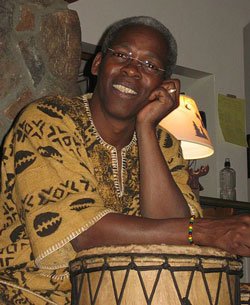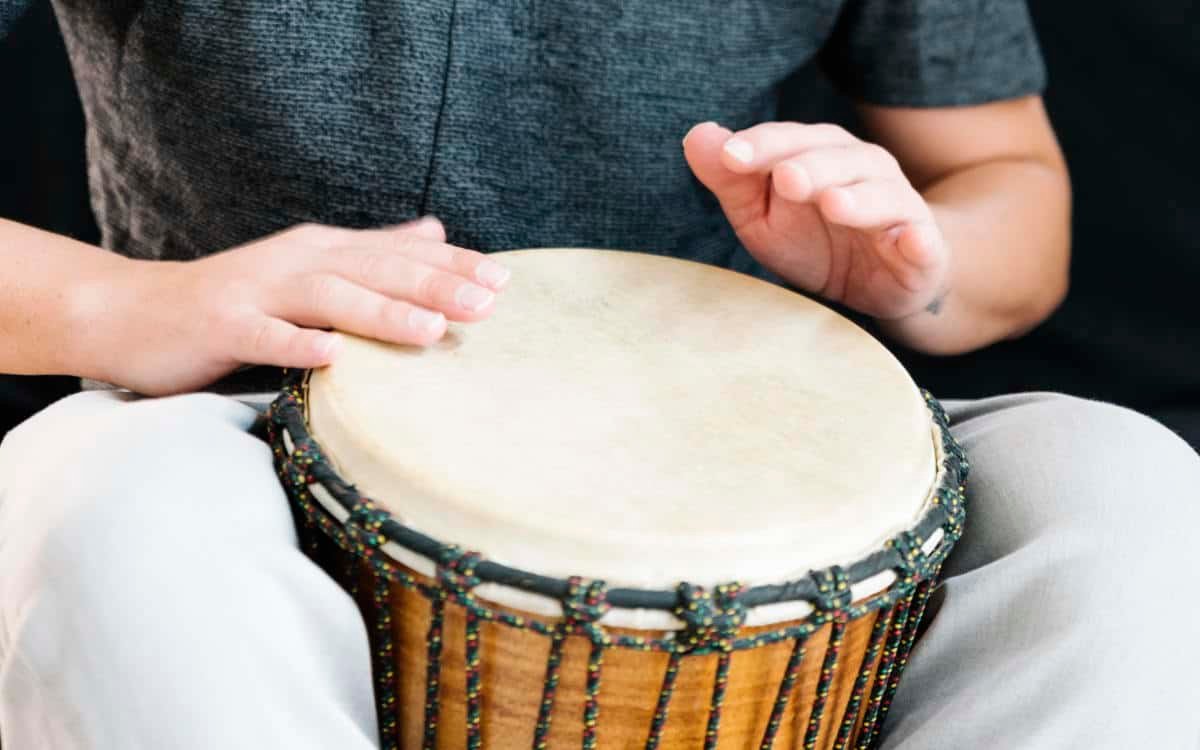
The Tone Note
In this lesson we look at playing the tone note.
Yeah, I know, it's confusing. The middle note on the djembe is called a tone. It doesn't refer to the sound quality or pitch, it's just the name of the note played on the edge of the drum.
The tone is the most common note played on the djembe. It's a core skill and it is crucial you get it right if you want to improve.
Luckily, it's not that hard, but there are some dos and don'ts.
In this lesson we dive into getting a solid tone. You'll be playing it twice as much as any other note, so this is important.
Getting Good Tone
The tone is played on the edge of the drum with only the fingers.
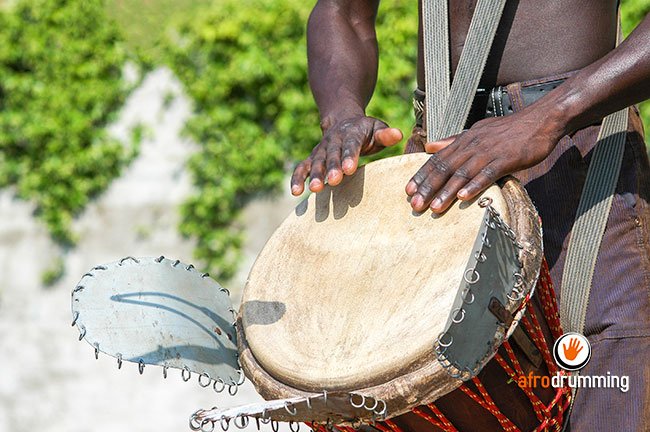
Striking The Drum
The note should be clearly defined and consistent (i.e. you should have control). It should have more wrist action that the bass note.
What Not To Do
This is a mistake I see people make all the time. It's a response beginners often have to the discomfort felt after playing the drum for a while.
Their tone hand position slips a little and they tend to play with the tips of their fingers.
You lose a lot of the resonance of the note and it becomes higher pitched.
So remember to be conscious of this and always try to use the full length of your fingers when playing a tone.
Some discomfort is to be expected. It's how you improve. It's worth it.
Plus, you'll have an excuse to try some of the cool things in our post on relieving sore hands from playing.
Let's crack on.
The Notes
On the notation chart, a tone note is represented by a black ring, like this:
The Words
The words used are either 'go' (pronounced like the start of 'Gordon') or 'do' (like the start of 'door') depending on which hand it is played with.
'Go' is played with the 1st hand, 'do' is played with the 2nd hand. See below.

Tone Note Exercises
Exercise 1
Count slowly and evenly from 1 to 4 and play a tone with one hand on count 1 only. Rest for counts 2, 3 and 4 (don't play anything) and then go back to the beginning, making sure to keep even time between counts 4 and 1 (It's as if you're going on to 5).
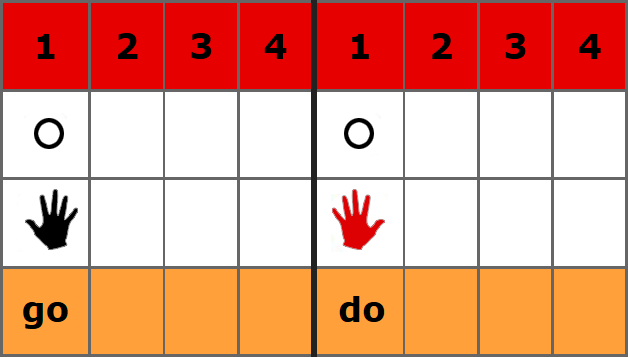
Exercise 2
Play a tone with one hand on count 1, rest on count 2, a tone with the other hand on count 3 and then rest on count 4.

Exercise 3
Now alternate between each hand on each count.

Exercise 4
Play 2 tones with one hand and 2 with the other.
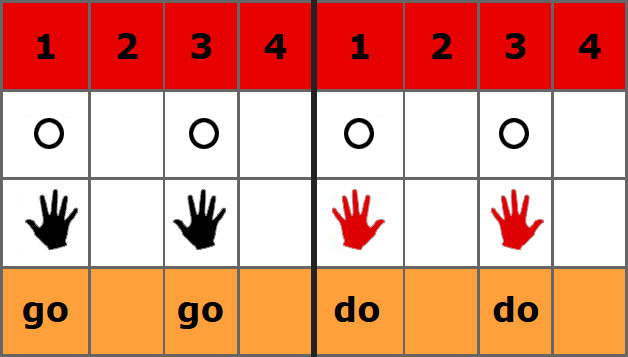
Exercise 5
Play 3 tones with one hand and 1 with the other.

Exercise 6
Same as above, but with opposite hands.
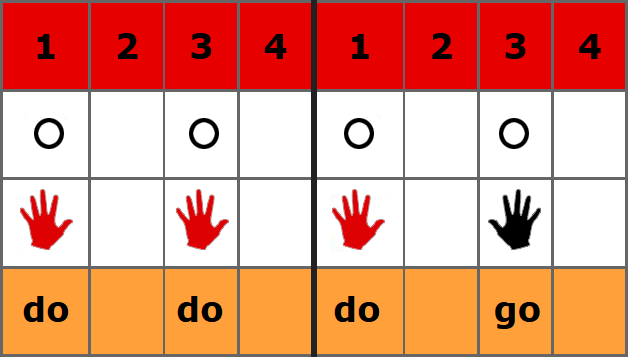
Exercise 7
Play one tone with one hand, rest for one, then three tones on successive beats with alternating hands, starting with the black hand.
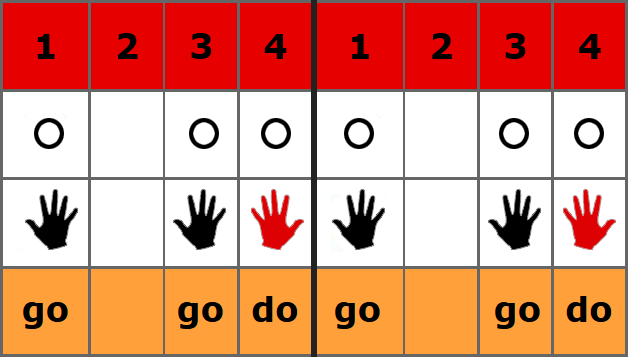
Exercise 8

Great stuff! Move on to...
